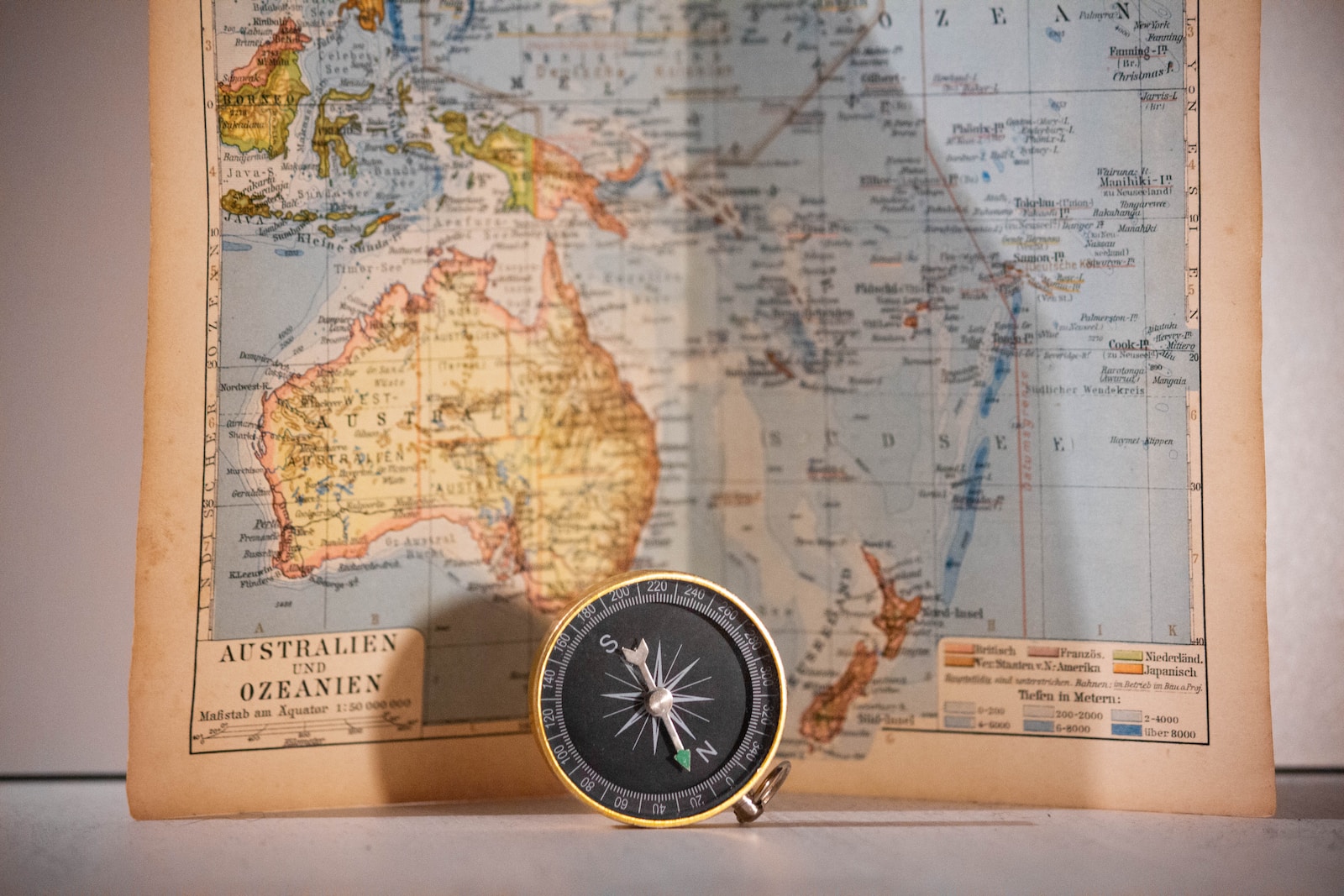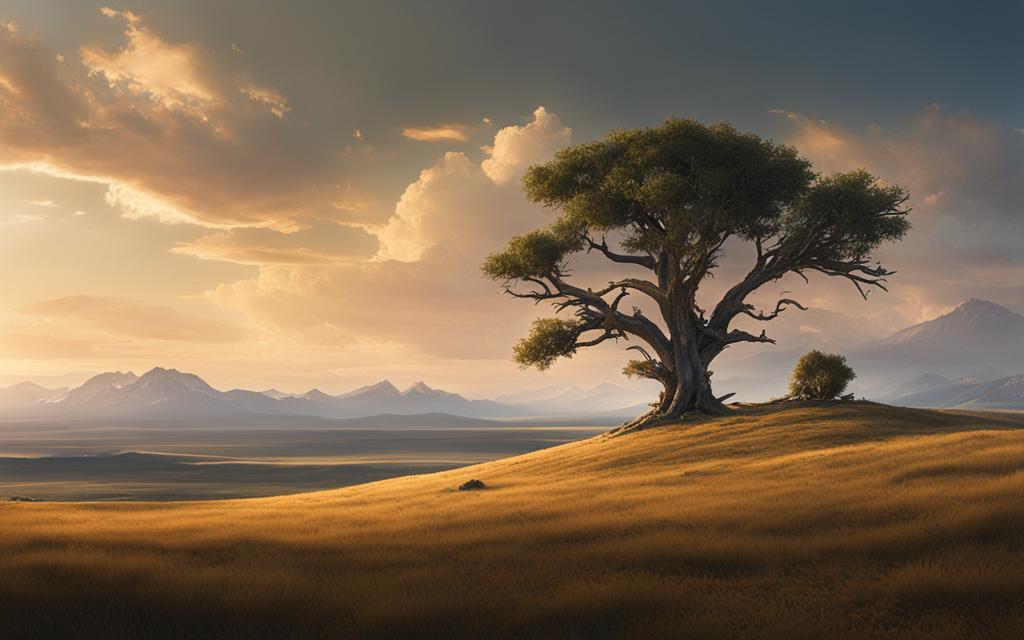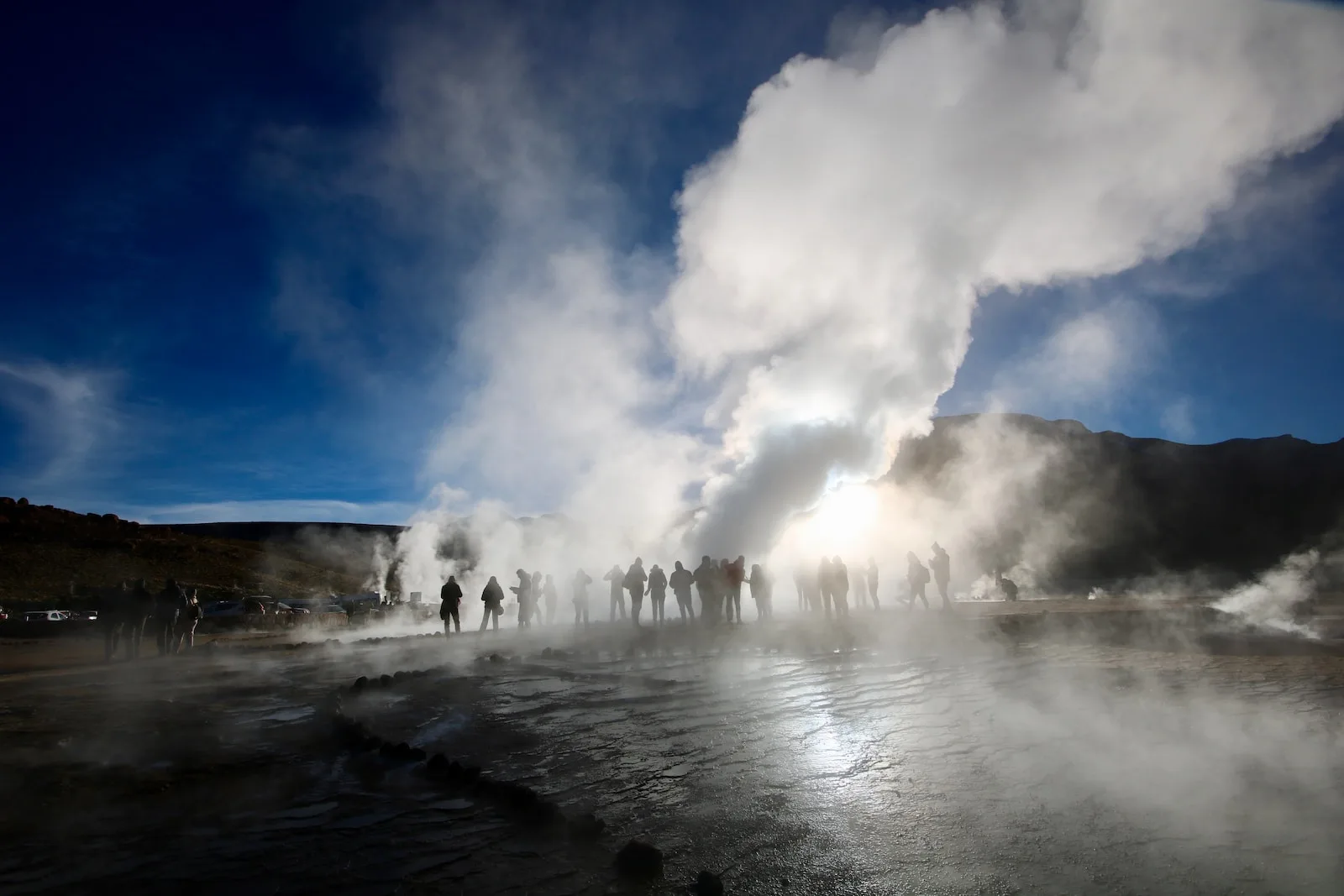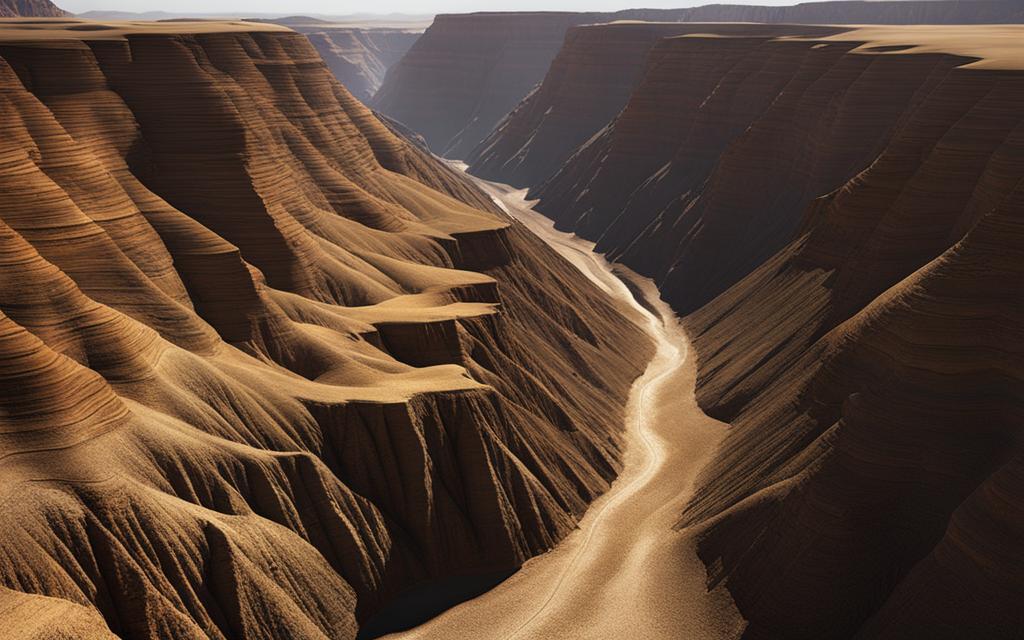Welcome to our article on the difference between Oceania and Australia! Oceania is a fascinating region composed of thousands of islands scattered throughout the Central and South Pacific. One of the key islands in Oceania is Australia, which holds the distinction of being the smallest continent in terms of land area. But what sets Oceania apart from Australia? Let’s dive in and explore!
Oceania, including Australia, is predominantly located in the Pacific Ocean. However, Oceania can be further divided into three island regions: Melanesia, Micronesia, and Polynesia. Australia dominates the region of Oceania, but there are other significant landmasses within the region, such as New Zealand and Papua New Guinea.
Key Takeaways:
- Oceania is a region composed of thousands of islands, which includes Australia.
- Australia is the smallest continent in terms of land area.
- Oceania can be divided into three island regions: Melanesia, Micronesia, and Polynesia.
- Other major landmasses within Oceania include New Zealand and Papua New Guinea.
- Oceania and Australia are located in the Pacific Ocean.
Physical Geography of Oceania
Oceania is a geographically diverse region with a unique and captivating physical landscape. It is composed of three main island groups: continental islands, high islands, and low islands. Each group has distinct characteristics that contribute to the overall beauty and allure of Oceania’s environment.
Continental Islands
Continental islands, such as Australia, Zealandia, and New Guinea, were once part of larger landmasses before being separated by sea-level changes and tectonic activity. These islands are characterized by vast land areas and diverse ecosystems. Australia, the largest continental island in Oceania, boasts a wide range of landscapes, including deserts, rainforests, and coastal regions.
High Islands
High islands, also known as volcanic islands, were formed through volcanic eruptions and have a distinctive central peak. These islands, like Fiji, Samoa, and Hawaii, are renowned for their lush vegetation, stunning waterfalls, and breathtaking mountain ranges. The volcanic activity has enriched the soil, supporting a diverse array of flora and fauna.
Low Islands
Low islands, also referred to as coral islands, are mainly composed of coral reefs and are often barely above sea level. These islands, found in the Pacific Ocean, are famous for their turquoise waters, white sandy beaches, and vibrant marine life. Some examples of low islands in Oceania include the Maldives, Tuvalu, and the Marshall Islands.
Overall, the physical geography of Oceania encompasses a spectrum of landforms and ecosystems, showcasing the region’s natural wonders. From the expansive continental islands to the towering peaks of high islands and the idyllic coral atolls of low islands, Oceania’s physical diversity provides a haven for exploration and appreciation of the natural world.
// Table
| Island Group | Main Characteristics | Example Islands |
|---|---|---|
| Continental Islands | Once attached to larger landmasses; diverse ecosystems | Australia, Zealandia, New Guinea |
| High Islands | Formed through volcanic activity; central peaks; lush vegetation | Fiji, Samoa, Hawaii |
| Low Islands | Composed of coral reefs; barely above sea level; vibrant marine life | Maldives, Tuvalu, Marshall Islands |
Flora and Fauna of Oceania
The flora and fauna of Oceania are incredibly diverse and unique, thanks to the region’s isolation and varied environments. Oceania is home to countless endemic species, meaning they are found nowhere else on Earth. This remarkable biodiversity is a testament to the region’s rich natural heritage and the adaptive capabilities of its plant and animal life.
When it comes to plant diversity, Oceania boasts a wide range of species that have adapted to the region’s different climates and terrains. From coconut palms that line the sandy beaches to mangroves that thrive in coastal wetlands, Oceania’s plant life is as varied as it is beautiful. Indigenous trees like the jacaranda and breadfruit also contribute to the region’s unique landscape, adding splashes of color and providing important habitats for wildlife.
Oceania is also renowned for its diverse array of animal species. The region is a haven for bird enthusiasts, with over 110 endemic bird species, including the iconic kiwi of New Zealand and the vibrant bird-of-paradise found in Papua New Guinea. Oceania is also home to a variety of unique reptiles, such as lizards and turtles, as well as a range of mammals, including bats and marsupials like kangaroos and koalas. The marine environment of Oceania is equally stunning, with expansive coral reefs and a plethora of marine species, making it a paradise for divers and snorkelers.
| Plant Life | Animal Life |
|---|---|
| Coconut palms | Kiwi (bird) |
| Mangroves | Bird-of-paradise (bird) |
| Jacaranda | Lizards |
| Breadfruit | Turtles |
| Bats | |
| Marsupials (kangaroos, koalas) |
The remarkable flora and fauna of Oceania make it a truly special place on Earth. Its endemic species and diverse ecosystems not only provide ecological benefits but also offer a unique opportunity for scientific research and conservation efforts. Preserving this extraordinary biodiversity is essential not only for the region’s natural heritage but also for the well-being of future generations.
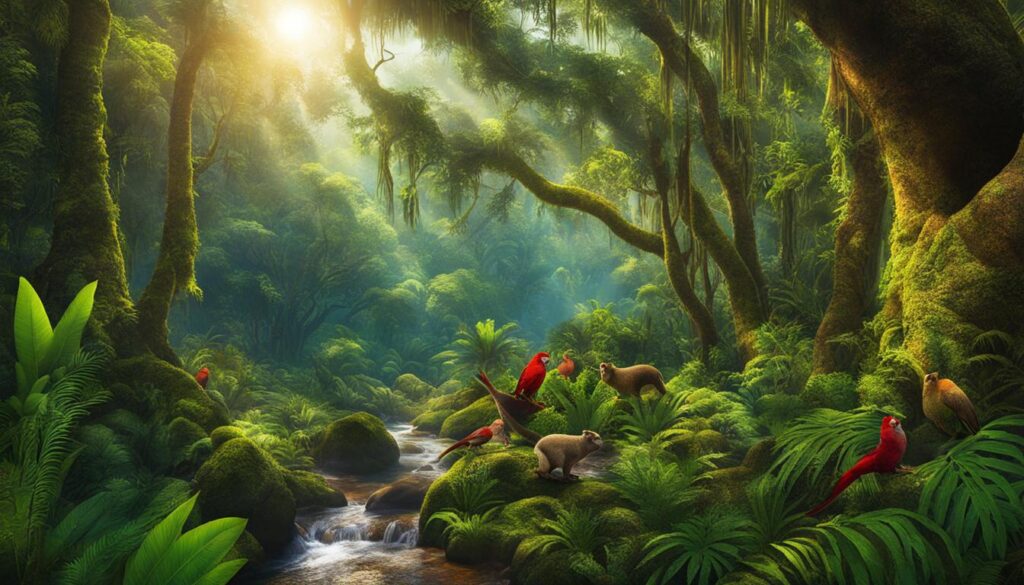
Cultural Geography of Oceania
The cultural geography of Oceania is a tapestry woven with the vibrant traditions and practices of its indigenous cultures. From the Polynesian culture that emerged from the seafaring traditions of Southeast Asian sailors to the rich cultural heritage of the Maori in New Zealand and the Aboriginal Australians, Oceania is a treasure trove of diverse cultural experiences.
Polynesian culture is deeply ingrained in Oceania, influenced by the navigational skills of its ancestors who explored the vast South Pacific. These cultures brought with them a wealth of traditional practices, such as language, music, dance, and customary rituals, which continue to shape the identity of the region.
The Maori have had a significant impact on the cultural landscape of New Zealand. They have a deep spiritual connection with their environment and have played a vital role in shaping the country’s forests and fauna through controlled fires and the introduction of new species. Similarly, Aboriginal Australians have developed a profound relationship with their local environment, which is reflected in their myths and legends that accurately depict the region’s unique landscape.
Indigenous Cultures of Oceania
Indigenous cultures in Oceania have influenced not only the cultural geography of the region but also its environmental practices. These communities have brought agricultural techniques to isolated islands, fostering sustainable food production. They have also developed practices to mitigate the challenges posed by their remote locations, such as fishing technologies and water management systems.
| Culture | Location | Key Practices |
|---|---|---|
| Polynesian | Tonga, Samoa, Hawaii, etc. | Navigation, language, dance, music |
| Maori | New Zealand | Controlled fires, environmental stewardship |
| Aboriginal | Australia | Sacred relationship with land, hunting, gathering |
The indigenous cultures of Oceania not only enrich the region’s cultural diversity but also serve as custodians of traditional knowledge and practices that sustain and preserve the unique environments of Oceania.
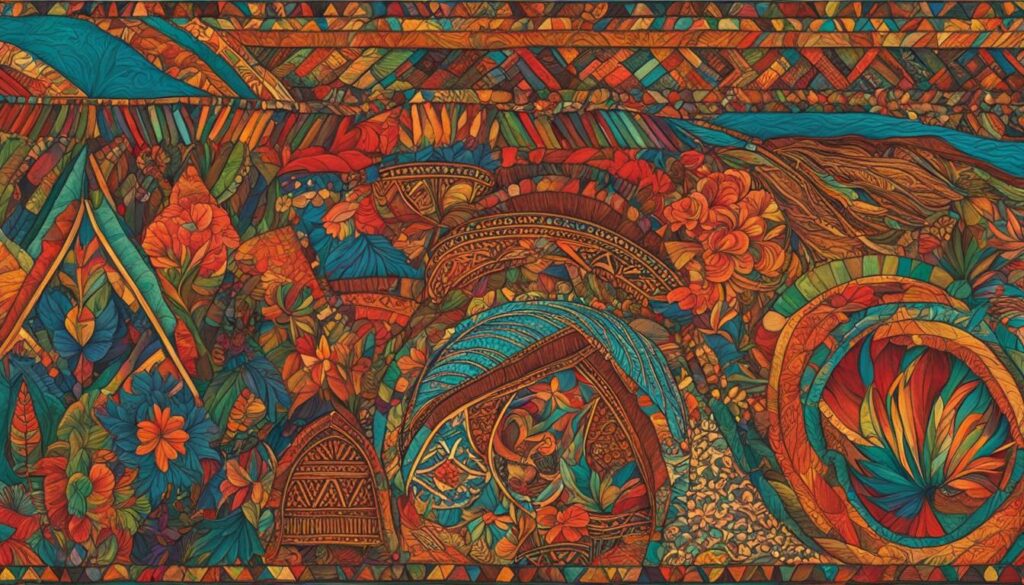
Contemporary Cultures and Tourism in Oceania
Oceania is a region known for its vibrant contemporary cultures and thriving tourism industry. The diverse population of Oceania is unified through cultural practices that celebrate art, sports, and traditional customs. One of the most popular sports in the region is rugby, with Australia and New Zealand boasting world-renowned rugby teams. Rugby matches bring communities together, fostering a sense of camaraderie and national pride.
A notable event that showcases the rich cultural heritage of Oceania is the Festival of Pacific Arts, held every four years. This festival brings together artists, performers, and artisans from across the Pacific to showcase their talents and promote cultural exchange. It is a celebration of the diverse traditions, music, dance, and crafts that represent the unique identity of each Pacific nation.
Tourism is a significant industry in Oceania, with visitors drawn to its pristine natural landscapes and vibrant cultural heritage. The region offers a wide range of attractions, from stunning beaches and coral reefs to ancient archaeological sites and traditional villages. Tourists can immerse themselves in the local culture by participating in traditional ceremonies, visiting art galleries, and exploring indigenous communities.
Cultural Practices in Oceania
Cultural practices in Oceania reflect the deep connection between the people and their natural environment. The indigenous communities have developed sustainable practices that have allowed them to thrive in harmony with their surroundings for thousands of years. These practices include traditional farming techniques, fishing methods, and the use of natural resources for crafts and medicines.
Traditional ceremonies play a significant role in Oceania’s cultural practices. These ceremonies are often performed to honor ancestors, celebrate important milestones, or mark the changing seasons. Music and dance are essential elements of these ceremonies, with each Pacific nation having its unique styles and rhythms. The melodies, chants, and movements tell stories of the land, history, and people.
Oceania Tourism
Oceania’s tourism industry has grown rapidly in recent years, attracting visitors from around the world. Travelers are drawn to the region’s natural beauty, such as the Great Barrier Reef in Australia, Bora Bora’s turquoise lagoons, and New Zealand’s breathtaking landscapes featured in the Lord of the Rings movies. The region also offers a wide range of adventure activities, including snorkeling, diving, hiking, and cultural tours.
However, the rapid growth of tourism also presents challenges. It is crucial to promote sustainable tourism practices to preserve the delicate ecosystems and protect the cultural heritage of Oceania. Local communities must be involved in decision-making processes to ensure that tourism benefits are shared equitably and that their cultural integrity is respected.
| Popular Cultural Practices in Oceania | Main Tourist Attractions |
|---|---|
|
|
Political Geography of Australia and Oceania
The political geography of Australia and Oceania has been significantly influenced by the history of European colonization in the region. Starting in the 16th century, European powers explored and established colonies in Australia and other parts of Oceania. This colonization had a lasting impact on the political landscape, shaping governance structures and land rights.
One key aspect of the political geography of Oceania is the issue of indigenous land rights. Indigenous groups in Papua New Guinea, for example, hold customary land title, which means they have legal ownership and control over their ancestral lands. However, the recognition and protection of indigenous land rights vary across the region, and conflicts often arise between indigenous groups, governments, and corporations over resource rights and development projects.
Europe Colonization in Australia and Oceania
European colonization in Australia and Oceania brought about significant changes in governance and political systems. The establishment of colonies by European powers led to the displacement and marginalization of indigenous populations. It also resulted in the imposition of Western legal and political structures on local communities, which continue to shape the political geography of the region today.
Indigenous land rights have become a crucial issue in Australia and Oceania, as indigenous peoples fight for recognition and protection of their ancestral lands. This includes issues such as land ownership, resource extraction, and cultural preservation. The political landscape is also shaped by ongoing negotiations and discussions around indigenous self-determination, sovereignty, and the reconciliation of past injustices.
In summary, the political geography of Australia and Oceania is deeply intertwined with the history of European colonization and the struggles for indigenous land rights. The region continues to grapple with the legacy of colonialism and its impact on governance and resource allocation. The recognition and protection of indigenous rights remain central to the political discourse in Oceania, as the region strives for social justice and equitable development.
Table: Comparison of Indigenous Land Rights in Oceania
| Country / Territory | Indigenous Land Rights |
|---|---|
| Australia | – Native Title Act provides legal recognition of indigenous land rights – Land rights vary across different states and territories |
| New Zealand | – Treaty of Waitangi recognizes Maori rights to land and resources – Land claims settled through historical treaty settlements |
| Papua New Guinea | – Customary land title recognized for indigenous communities – Land disputes and conflicts over resource extraction |
| Fiji | – Native Land Trust Board safeguards indigenous land and resources – Land leases governed by traditional communal ownership |
Conclusion
In conclusion, Oceania is a fascinating and diverse region that encompasses thousands of islands, including Australia. The uniqueness of Oceania lies in its physical geography, with a combination of continental islands, high islands, and low islands creating a diverse and breathtaking landscape.
The flora and fauna of Oceania are equally remarkable, with many endemic species found only in this region. From majestic coconut palms to vibrant bird species, Oceania’s biodiversity is truly extraordinary.
The cultural and political geography of Oceania reflects its history of colonization and the rich heritage of its indigenous cultures. Through practices like sports and the arts, contemporary cultures in Oceania strive to foster unity among diverse populations. However, challenges related to resource rights and conflicts between indigenous groups, governments, and corporations persist.
Tourism plays a vital role in Oceania’s economy, attracting visitors from around the world. However, it is crucial to implement sustainable tourism practices to preserve the region’s pristine natural environments for future generations.
FAQ
What is the difference between Oceania and Australia?
Oceania is a region made up of thousands of islands throughout the Central and South Pacific, while Australia is a country and the smallest continent in terms of land area within the region of Oceania.
What are the different island groups in Oceania?
Oceania can be further divided into three island regions: Melanesia, Micronesia, and Polynesia.
What are the different types of islands in Oceania?
Oceania consists of three main island groups: continental islands (such as Australia and New Guinea), high islands (formed through volcanic eruptions), and low islands (made up of coral reefs).
What is unique about the flora and fauna of Oceania?
Many plants and animals in Oceania are endemic, meaning they are found nowhere else on Earth. The region is home to a variety of plant species, including coconut palms and indigenous trees, as well as diverse bird species, lizards, bats, and marsupials like kangaroos and koalas.
How have indigenous cultures shaped the cultural geography of Oceania?
Indigenous cultures in Oceania, particularly Polynesian culture, developed from seafaring traditions. These cultures have had a significant impact on the environment, such as introducing agriculture to isolated islands and shaping landscapes through controlled fires and introduced species.
What are some contemporary cultures and attractions in Oceania?
Contemporary cultures in Oceania focus on unifying isolated populations through practices like sports (such as rugby) and the arts (such as the Festival of Pacific Arts). Tourism is also popular, with the region’s pristine natural environments attracting visitors.
How has European colonization impacted the political geography of Australia and Oceania?
European powers established colonies in Australia and other parts of Oceania, shaping the political landscape. Indigenous land rights play a crucial role, and conflicts between indigenous groups, governments, and corporations over resource rights are prevalent.
 Skip to main content
Skip to main content